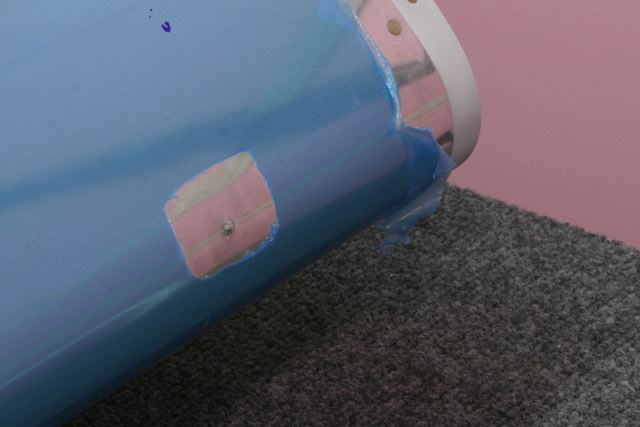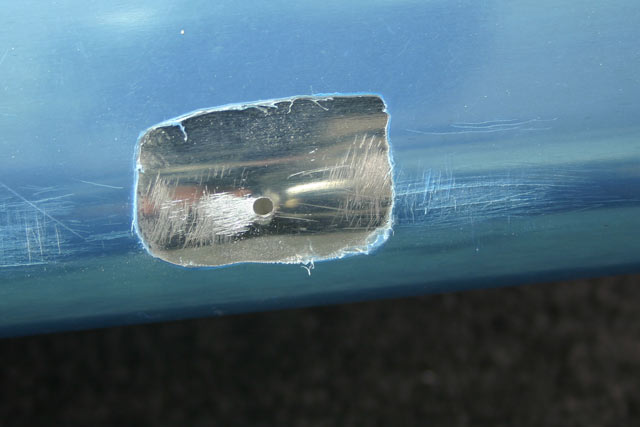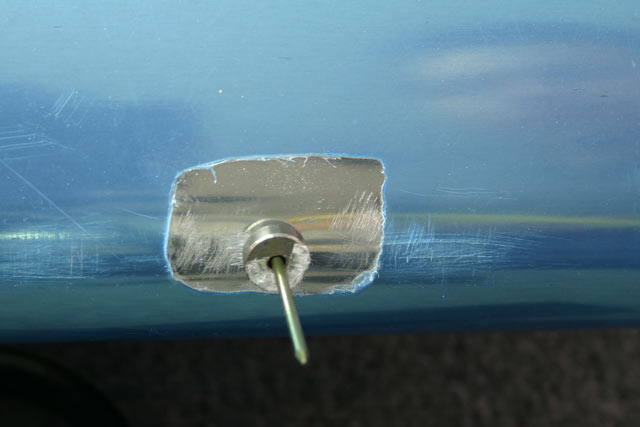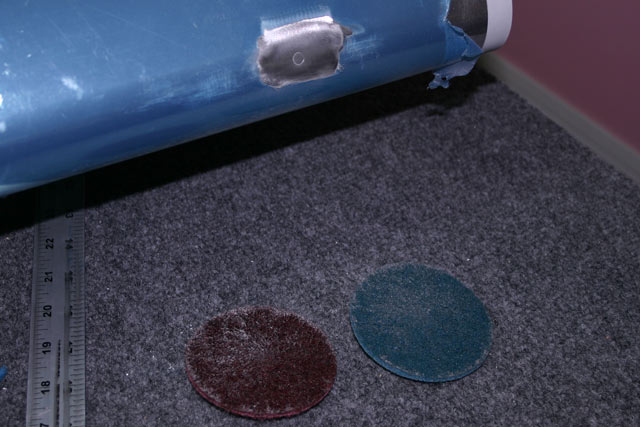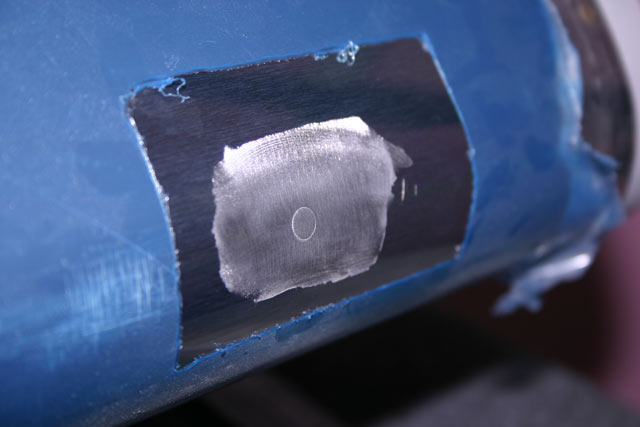Fixing Leading Edge Crack.. February 7th, 2008
I asked around and got lots of advice on how I may want to fix this. I posted a picture of the dent and asked for help at Van’s Airforce, and within less than a day I had several suggestions of what to do. I ended up following the advice given by Mark Hegy (I guess the “A&P Gulfstream Aerospace.” in his signature swayed me just a little :-). He basically said to use ‘soft rivets’ and then use a blue and blue scotch-brite discs to polish the rivet/skin.
First I ordered some AN426A-4-3 rivets from Aircraft Spruce. Actually, I ordered about 397 more rivets than I needed (They won’t sell me less than 1/8 of a pound!). Even so, this was my first time putting in a $2 order, and was pleasantly surprised they sent it to me via USPS and charged me only something like $2.50 for shipping, which is very close to what the stamp on the box said.
With the rivets on hand, I took a piece of scrap aluminum, set it between two blocks of wood, and dropped my bucking bar on it (hey — I had to do a practice run first, right?!).
I went through all the steps on the scrap piece, and since I liked the results, decided to try it on the wing. So, this is what I started with — a right leading edge with a small but nasty ding/crack near the tip…
This is the ding after getting sanded down. It is mostly flat, with just the crack and some very thin aluminum in the area.
And here is the final result. From a distance, it will be very hard to tell there is a rivet in there.
